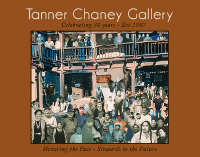Charles Loloma (1921-1991)
WORLD RENOWNED HOPI JEWELER
As many others, Loloma was drafted into the army in 1941. He became a camouflage expert and was stationed in Missouri. From there he spent his time in the Aleutians as an engineer. In 1942 he married Otellie Pasivaya. Loloma returned to her village, Second Mesa, after he was discharged in 1945. With help of the GI Bill, Charles attended the School of American Craftsman at Alfred University. There he studied design, mechanical drawing, ceramic chemistry and marketing.
Loloma applied for a Whitney Foundation Fellowship. With the grant he studied the clays used by Hopi Indians. Through his experiments he proved that shale clays would turn into a glaze if fired at high temperatures. During his stay at Alfred, Loloma also discovered he wanted to pursue an occupation as an artist. He and his wife set up a shop in the Kiva Craft Center in Scottsdale, Arizona. After several years of working with clay and weaving, Loloma decided to try jewelry making. He continued to make and sell his jewelry in his shop. He was a self-taught silversmith. Loloma did find some help in a book called The Navajo and Pueblo Silversmiths. Loloma's early work was mainly cast objects designed in a traditional Hopi fashion. Loloma also taught part-time at Arizona State College and in Sedona during summers. He was able to formulate ideas on design and gather information on selling and marketing through these various experiences. Loloma and his wife were the first Native American's to successfully run a pottery shop. Because of this they received attention that inevitably helped their business.
In 1962 the Institute of American Arts was founded. Loloma was appointed head of plastic arts and sales departments. Loloma traveled to Paris in 1963. While in Paris, his jewelry was modeled in fashion shows and exhibited in private shows. After his visit, he returned to the Institute in Santa Fe where he remained until 1965. He then went back to his village in Hoteville. Soon after his return, he divorced his wife and remarried. He built a studio in his home and continued to make jewelry.
Loloma believes his most important contribution to the field was what he called "inner gems". These were hidden stones in his jewelry, once the jewelry was put on; you could no longer see the gems on the inner side of the jewelry. These gems were to indicate inner beauty of the wearer. Usually these gems were more valuable than the gems on the outside of the jewelry.
Loloma received
many awards and prizes and is represented in numerous collections
nationwide. In 1991, Loloma passed away and his studio no longer produces
jewelry.

